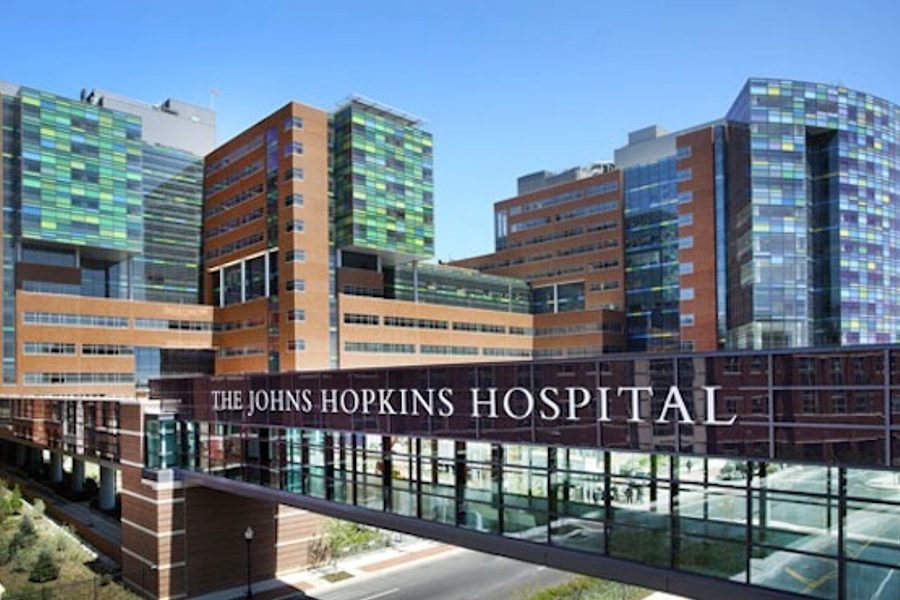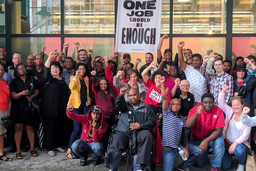
BALTIMORE — Unionized workers at Johns Hopkins Hospital finalized a new labor contract this week in an episode that highlights the stark economic power of wealthy Hopkins in a city badly wounded by industrial decline and municipal neglect.
Late last week, members of 1199SEIU — the East Coast healthcare division of the Service Employees International Union — voted to approve a one-year contract covering maintenance workers, kitchen staff, nurse aides and other workers, says Armeta Dixon, an 1199SEIU vice president with experience dealing with Hopkins and other hospitals in the area.
Though it provides a welcome 2.25 percent wage increase without any big concessions, the contract is problematic in that it also defers for a year the resolution of a difficult issue that could prove very damaging to union members; Hopkins wants to impose a new health insurance system that “would be an economic hardship” on members, Dixon says, and there appears to be little room for agreement between the union and hospital managers on how to handle the issue.
In an interview with Working In These Times, Dixon was reluctant to discuss the economics of the Hopkins proposal, but an earlier estimate from the union had pegged the additional cost at $1,800 a year for each member. If imposed by the hospital at that level, the new health care costs will eat up all the gains from the wage increase, and will actually reduce the take-home pay of the largely low-paid union workers.
The one-year contract, Dixon indicates, is essentially a stalling tactic that provides a little breathing room for further negotiation. Normally, Hopkins and two other Baltimore hospitals sign three-year contracts at about the same time, with similar wage and benefit provisions. But that pattern has now gone by the wayside, and the union faces an especially challenging year ahead.
Les Bayless, a Baltimore union activist who has worked for SEIU and other unions in the area, says that while the healthcare union has some real strengths, it is badly overmatched in its contest with Hopkins. As the second largest single employer in Baltimore — the university itself is the first — Johns Hopkins Medicine is a huge presence in the city. Unionized employees make up only a small portion of Hopkins Hospital employees, and the union has made no inroads at all into the well-paid technical and professional vocations that have made it famous at the national and international level.
Further, the hospital and its associated organizations have invested billions in medical facilities here in an era when industrial and commercial businesses have fled the city. Within the last year, the nearby Sparrows Point steel mill was closed permanently, and the city’s largest private corporation, Constellation Energy, was gobbled up by a Chicago-based conglomerate. In contrast, Hopkins Hospital opened a gleaming $1.1 billion medical complex in an economically depressed section of the city. Hopkins’ wealth and influence are unmatched in the region, Bayless says, and even the largest and strongest unions would be overpowered.
But Dixon says that this reality is not going to prevent 1199SEIU from fighting Hopkins over next year’s contract. Members are already “overburdened” with high heath care costs, she says, and have already begun mobilizing for a new contract fight.
All of this comes at a time when 1199SEIU is developing its “Heart of Baltimore” campaign, a long-term effort to increase membership with new organizing initiatives at non-union hospitals and other health care facilities.
The campaign was launched in 2010 with a low-intensity effort to build political support at the grassroots level. Among other things, the union wants local politicians and public institutions to support a “Free and Fair” code of conduct for healthcare employers that would prohibit aggressive anti-union campaigns. It has some backing from influential politicians, such as Maryland Gov. Martin O’Malley and Baltimore Mayor Stephanie Rawlings-Blake.
A focus for organizing is the University of Maryland Medical Center (UMMC), another large hospital that has long been in the union’s sights. UMMC spokeswoman Mary Lynn Carver confirmed that 1199SEIU organizers have been active recently at the Center’s facilities but declined any further comment. New organizing is never easy, Bayless observes, and it will be difficult for 1199SEIU to mount an effective UMMC effort with the Hopkins contract issue casting a shadow over developments.
But, Dixon says, the immediate next step for 1199SEIU is to reach new agreements with the two other Baltimore hospitals with union contracts, Greater Baltimore Medical Center and Sinai Hospital. Existing contracts have expired with both hospitals and temporary extensions are in place, says Dixon, adding that negotiations have already started but there is no target date for completion of the new agreements.







